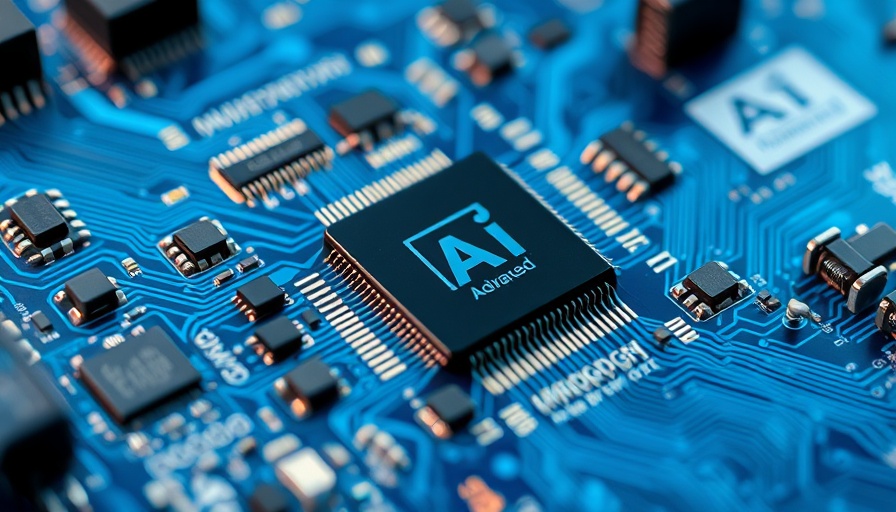
Navigating the Rise of Homegrown AI Technology
As global demand for artificial intelligence (AI) technology surges, Chinese AI chipmaker Cambricon has made headlines with its remarkable turnaround. Posting a record profit of Rmb1 billion ($140 million) for the first half of 2025, the company achieved a staggering 44-fold increase in revenues compared to the previous year. This success can be attributed to growing demand for domestically produced semiconductors, especially as Beijing encourages national tech firms to reduce reliance on foreign giants like Nvidia.
Understanding the Shift Towards Domestic Production
This pivot towards homegrown semiconductors is not just a trend, but a strategic necessity for China. Chinese tech giants such as ByteDance and Tencent are exploring local alternatives to Nvidia’s technology. As Nvidia has been the primary supplier for AI training models, its chip dependency poses a significant risk amid geopolitical tensions. In contrast, Cambricon’s rising profile aligns with the country’s ambitions to bolster its semiconductor capabilities, presenting an opportunity for businesses seeking reliable alternatives.
Investor Confidence and Market Impacts
Investors are responding enthusiastically. Cambricon’s stock doubled within a month following announcements of improved models compatible with its chips from AI companies like DeepSeek. With Cambricon holding an estimated 3% market share in the Chinese AI chip market, its development signals a broader confidence in local technological innovation and investment. Its plans to raise Rmb4 billion through a follow-on stock offering highlight a strategic focus on expanding its production capacity and enhancing its software for large language model (LLM) training.
Trends in the Chinese Tech Ecosystem
The rise of companies like Cambricon reflects a significant shift in the tech landscape of China. As local businesses increasingly pivot towards sustainable, homegrown solutions, the prospects for innovation in various sectors flourish. Reports indicate that the demand for AI chips is on the rise, fueled by the collective efforts of the Chinese government and private sector collaborations, presenting new business opportunities for startups and established firms alike.
The Role of Policy in Driving Change
Beijing’s push to support local chip manufacturers not only aims to mitigate reliance on foreign technology but also enhances the overall security of its tech ecosystem. This policy framework encourages businesses to innovate and invest in local technologies, creating a thriving startup ecosystem that fosters competition and growth. As industries rapidly adapt, the implications for corporate social responsibility and sustainable business practices become increasingly pertinent.
Challenges Ahead for Domestic Producers
Despite the impressive gains made by Cambricon, challenges remain. The company, while gaining momentum, still faces stiff competition from bigger players such as Huawei. Moreover, the semiconductor industry is riddled with complexities, from fabrication limitations to fluctuations in global supply chains. These factors necessitate continuous innovation and agility, especially during times of uncertainty.
Future Predictions: Opportunities in the Tech Sector
The AI chip market is expected to expand, with estimates projecting substantial growth in demand for locally produced semiconductors. Analysts, including Lin Qingyuan from Bernstein, posit that Cambricon stands as a viable alternative to Huawei, potentially increasing its market share as the demand for local solutions grows. The investment landscape is evolving, with venture capital funding pouring into sanitation and infrastructure projects, especially in economically vibrant regions like the Bay Area.
Conclusion: Embracing Change and Future Growth
The story of Cambricon serves as an important lesson in resilience and adaptation in the face of global challenges. As the company leads the charge in creating locally produced AI technology, both investors and consumers alike have a role to play in shaping the future of the tech industry. Following this growth trajectory, stakeholders can explore new avenues for investment, innovation, and sustainable practices to ensure long-term success in a rapidly transforming market.
 Add Row
Add Row  Add
Add 



Write A Comment